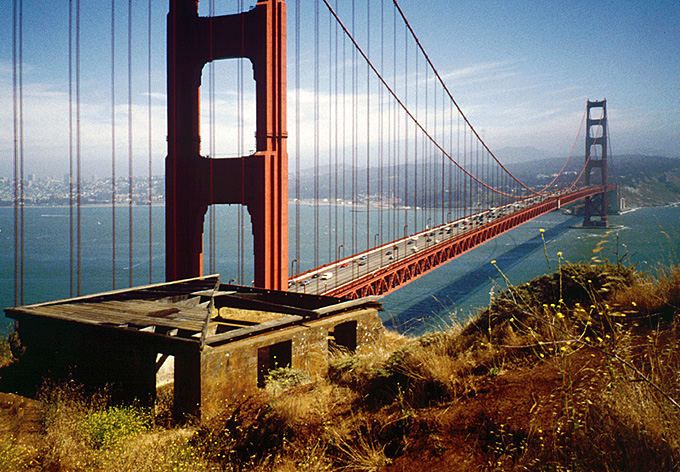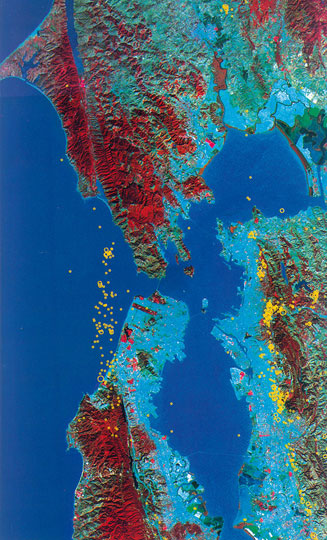A Camera Obscura Project in the Army Bunkers
of the Golden Gate
Headlands Center for the Arts, San Francisco, USA, 1996
Extract from catalog: FRANZ JOHN – MILITARY EYES

Franz John, a Berlin-based artist, developed the project which became »Military Eyes« as a site-specific investigation while an Artist-in-Residence at Headlands Center for the Arts (HCA) in 1996. He chose the site for this project because of its location amidst the unique confluence of military architecture and dramatic wilderness.
Following old military maps, Franz John explored the area on foot, becoming intimately familiar with the terrain and military architecture. Using the vantage points provided by the remains of the military bunkers, John recorded traces of the soldiers’ activities and observations made in the bunkers. He employed both the older camera obscura technique, and a modern hand copier drawn across the concrete surfaces.
Unlike traditional photographic techniques, the copier allowed him to work instantly and capture visual information on site. To gain artistic access to this unusual architecture, John explored ideas about the potential relationship between strategic planning, tactical behavior (i.e. selection of place) and aesthetic perception.

In his words, “carvings on the wall, sketches, notes and even accidental traces can give information about how generations of soldiers have lived and what they might have perceived. Those traces are also references of collective perception, as the point of view throughout the bunkers was standardized by the restricted views from observation slits. While I’m working, I think about the boredom of the soldiers who spent hour after hour in the bunkers doing tedious »militar-fremde« jobs such as plotting wind direction, the humidity in the air and even the rotation of the earth”.


















